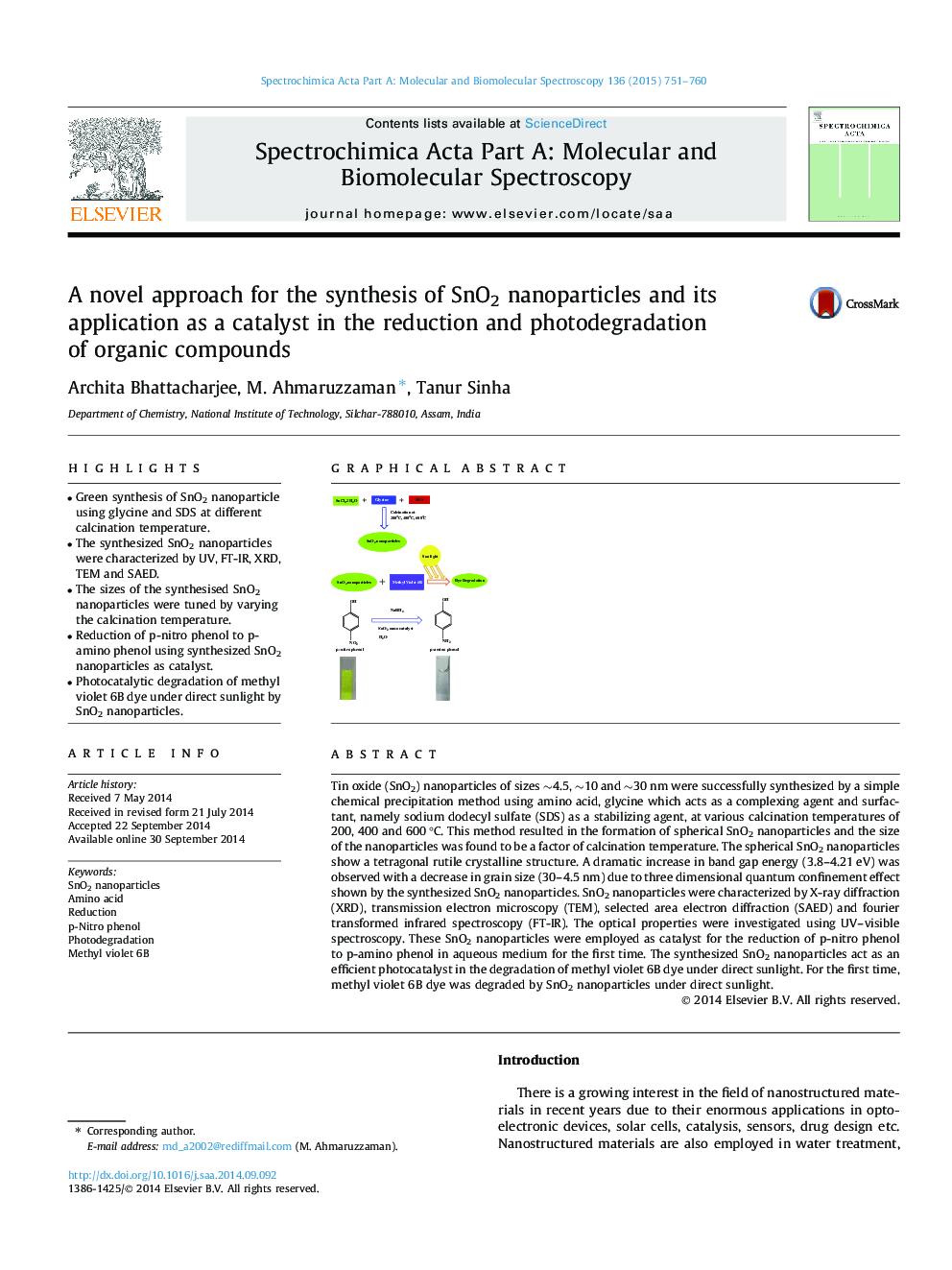| کد مقاله | کد نشریه | سال انتشار | مقاله انگلیسی | نسخه تمام متن |
|---|---|---|---|---|
| 1229491 | 968734 | 2015 | 10 صفحه PDF | دانلود رایگان |

• Green synthesis of SnO2 nanoparticle using glycine and SDS at different calcination temperature.
• The synthesized SnO2 nanoparticles were characterized by UV, FT-IR, XRD, TEM and SAED.
• The sizes of the synthesised SnO2 nanoparticles were tuned by varying the calcination temperature.
• Reduction of p-nitro phenol to p-amino phenol using synthesized SnO2 nanoparticles as catalyst.
• Photocatalytic degradation of methyl violet 6B dye under direct sunlight by SnO2 nanoparticles.
Tin oxide (SnO2) nanoparticles of sizes ∼4.5, ∼10 and ∼30 nm were successfully synthesized by a simple chemical precipitation method using amino acid, glycine which acts as a complexing agent and surfactant, namely sodium dodecyl sulfate (SDS) as a stabilizing agent, at various calcination temperatures of 200, 400 and 600 °C. This method resulted in the formation of spherical SnO2 nanoparticles and the size of the nanoparticles was found to be a factor of calcination temperature. The spherical SnO2 nanoparticles show a tetragonal rutile crystalline structure. A dramatic increase in band gap energy (3.8–4.21 eV) was observed with a decrease in grain size (30–4.5 nm) due to three dimensional quantum confinement effect shown by the synthesized SnO2 nanoparticles. SnO2 nanoparticles were characterized by X-ray diffraction (XRD), transmission electron microscopy (TEM), selected area electron diffraction (SAED) and fourier transformed infrared spectroscopy (FT-IR). The optical properties were investigated using UV–visible spectroscopy. These SnO2 nanoparticles were employed as catalyst for the reduction of p-nitro phenol to p-amino phenol in aqueous medium for the first time. The synthesized SnO2 nanoparticles act as an efficient photocatalyst in the degradation of methyl violet 6B dye under direct sunlight. For the first time, methyl violet 6B dye was degraded by SnO2 nanoparticles under direct sunlight.
Figure optionsDownload as PowerPoint slide
Journal: Spectrochimica Acta Part A: Molecular and Biomolecular Spectroscopy - Volume 136, Part B, 5 February 2015, Pages 751–760